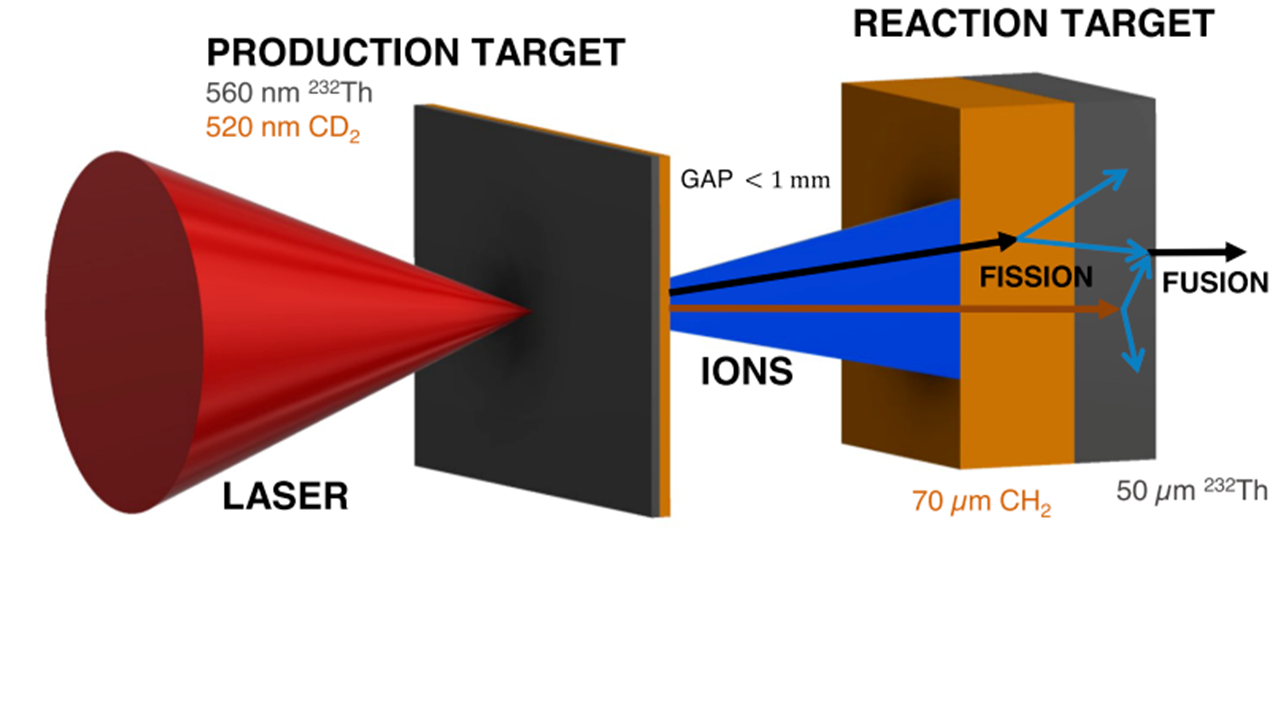Targetry

Optimized targets are essential for the success of the development towards the Fission-Fusion reaction scheme, where in the first stage heavy isotopes will be laser-accelerated from a 'production target' foil towards the second 'reaction target', where fission of projectile-like and target-like nuclei will be initiated. However, when aiming at an optimization of the achievable reaction yield, it would be advantageous to spend only the minimum amount of energy (taken from the driving laser pulse) needed for overcoming the fission barrier of about 7 MeV/u. This could be much more efficiently be achieved by a multitude of light particles such as protons, deuterons of carbon ions rather than by a single heavy (A ~ 200) gold ion. Therefore it may be advantageous to build a multi-layer target where in a sandwich structure light and heavy ions will be simultaneously exposed to the driving laser pulse. So the gold layer could be combined with a plastic foil layer for CH2 or CD2. In the same way the gold layer of the reaction target could be covered on its front surface by such light-ion layers. In that way the accelerated light ions could efficiently induce fission of the heavy species in the reaction target, while conversely the impinging accelerated heavy species would undergo fission when interacting with the light-ion layers of the reaction target. Again this simplistic picture needs experimentasl validation and therefore considerable efforts will be needed to develop the optimum structure of the main 2-layer assembly of production and reaction target, including in each of them the envisaged sandwich composition of heavy and light species. Composition and relative thicknesses need to be systematically studied, which would be the task of the Technological Laboratory available for CALA in close interaction between technologists and experimenters.
Target Heating for Acceleration from Gold Targets
Without any further measures, the surface any target (in our case of the gold targets) will be covered by a thin layer of surface contaminants like hydrogen and/or carbon. Due to their higher charge-to-mass ratio, they are more efficiently accelerated by the laser-target interaction than gold ions, thus impeding optimum laser acceleration of heavy species. In order to enhance the efficient acceleration of gold ions, a target heating system is set in place so that these surface contaminants are evaporated from the target surface. It consists of a Nd:YAG heating laser and a real-time in-vacuum target monitoring system. This system can for one image the target to inspect possible damage produced by the heating. Furthermore, it can measure the target temperature by analyzing the emitted IR spectrum via Planck’s law for a black body.

